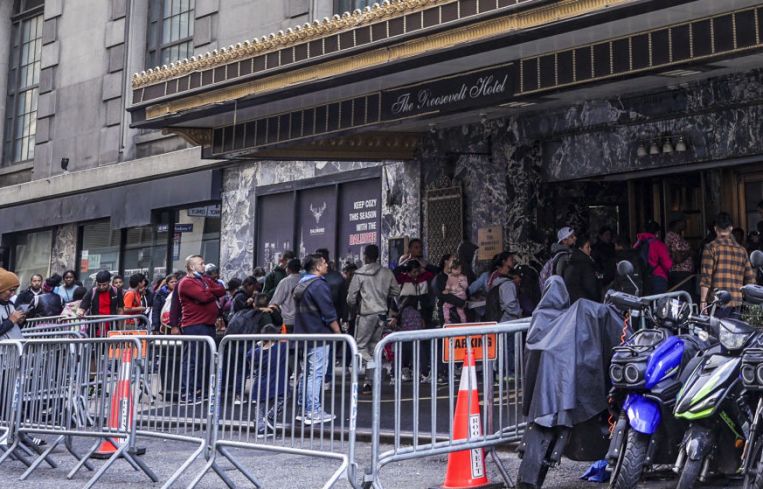NYC Continues to Flout Rules for Shelter Site Selections, Comptroller Says
By Rebecca Baird-Remba November 10, 2023 7:17 pm
reprints
More than 30 years after passing a rule that required equal distribution of parks, fire stations, homeless shelters and waste transfer stations across the five boroughs, New York City continues to site less-desirable municipal facilities in over-burdened neighborhoods, according to a new report from the City Comptroller’s office.
Many areas, including Midtown and the South Bronx, have a high concentrations of homeless shelters and social service facilities like drug rehab centers, while vast swaths of southwest Brooklyn have little to none, flouting the rule calling for them to be distributed fairly, the comptroller found.
“When facilities are sited unfairly, the burdens and the benefits of those city facilities are unevenly distributed, exacerbating racial and economic disparities,” the analysis from Comptroller Brad Lander’s office noted.
Homeless shelters, in particular, are heavily concentrated in Midtown Manhattan, the South Bronx, northwest Queens and eastern Brooklyn. Manhattan Community District 5 — which stretches roughly from 14th Street to Central Park between Lexington and Eighth avenues — has the highest concentration of shelter beds on a per capita basis, with 91 beds for every 1,000 residents, according to the report.
While the number of community districts with zero shelter beds has shrunk since 2022, the concentration of shelters in a handful of neighborhoods has become more dramatic. Brooklyn’s Community District 16, which consists of Ocean Hill and Brownsville, has 47 shelter beds per 1,000 residents. Other neighborhoods with high concentrations of shelter beds include Tremont and West Farms in the central Bronx; Longwood and Hunts Point in the Bronx; and Astoria in Queens.
Meanwhile, a vast swath of southwest Brooklyn — including the neighborhoods of Bay Ridge, Dyker Heights, Bensonhurst and Bath Beach — continue to have no shelter beds at all. Other districts with zero shelters include Morris Park in the northeast Bronx and Staten Island’s South Shore, the report found.
Social services facilities — which include drug rehab sites, soup kitchens, homeless services, mental health services and public health clinics — are also overwhelmingly concentrated in a handful of neighborhoods, namely Midtown, central Harlem and East Harlem, the report found.
But those neighborhoods shouldn’t be shouldering the burden thanks to a 1990 measure, known as Fair Share, which requires that the city government conduct analyses of how municipal facilities will impact communities and determine whether the placement is “fair.”
Yet the city does not have a specific office that’s responsible for overseeing the Fair Share mandate, nor does it have an oversight framework in place for ensuring that the rules are followed.
The comptroller’s office recommended that the city develop a framework to make sure Fair Share is followed, identify an agency that should handle it, and improve public information on how and where municipal facilities are located. That would include parks, fire stations, homeless shelters, waste transfer stations, and asylum seeker shelter sites.
The comptroller also argued that the city should regulate unfair sitings of shelters and similar facilities in communities that are oversaturated with them by requiring a City Planning Commission vote before they can go forward. The mayor’s office didn’t immediately respond to a request for comment on the report.
Rebecca Baird-Remba can be reached at rbairdremba@commercialobserver.com.


